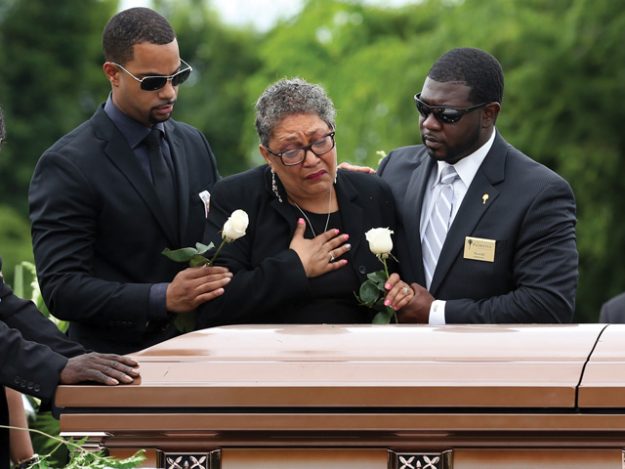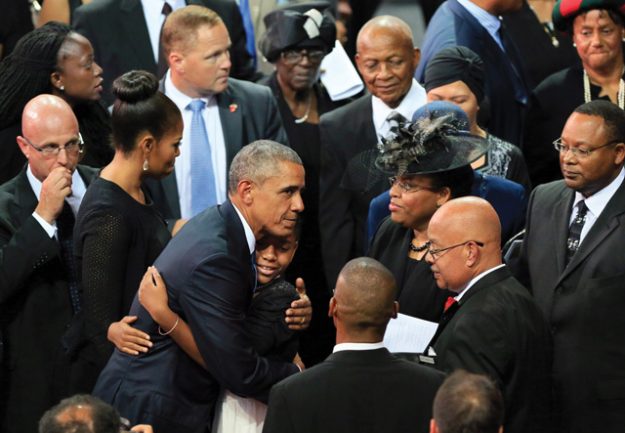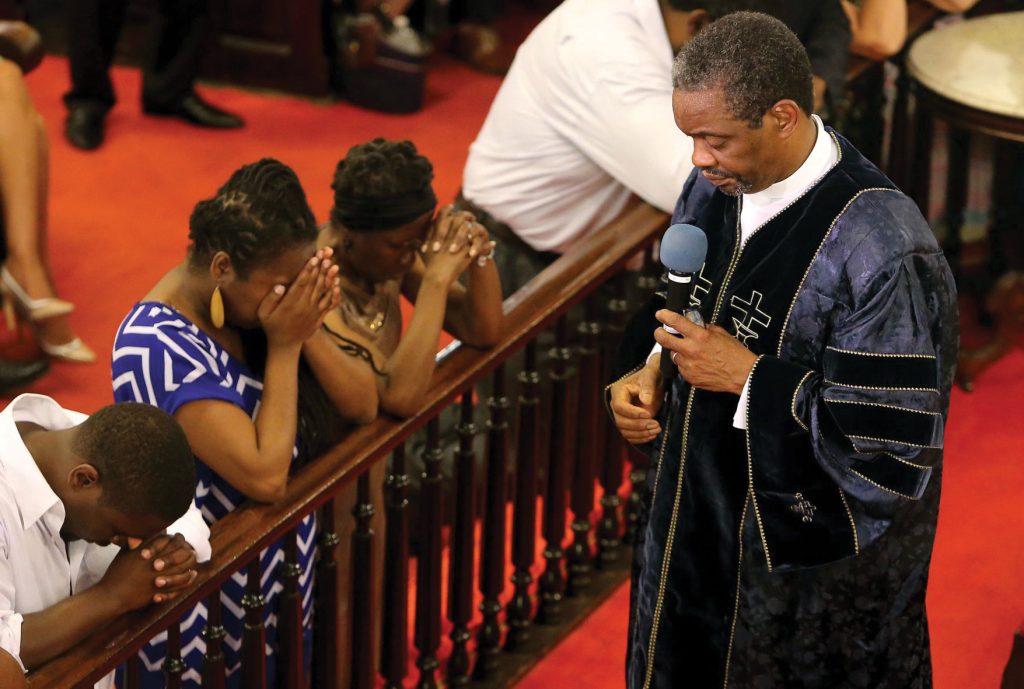“Father forgive them, for they know not what they do.” According to chapter 23, verse 34 of the Gospel of Luke, these were the words of Jesus Christ as he looked down from the cross upon his persecutors, imploring God to absolve them of their sins. This biblical quote is not infrequently called forth to reassure victims of attack that their assailants are fundamentally ignorant of the gravity of their crimes, and, therefore, should be pardoned—spiritually, at least. However, there is yet another interpretation, a textual one that places as much emphasis on the weight of the sin as on mercy for the sinner.
The call for forgiveness—directed at God in the Bible, though advised for all beings no less—is not merely a plea to soften a heart hardened by bitterness and resentment. Forgiveness, rather, is also an inextricable consequence of one underlying cause—and that is bloodshed. “Without the shedding of blood,” as stated in Hebrews 9.22, “there is no forgiveness.” When Jesus implored God from the cross, he was not only calling for compassion but was also speaking into existence something that had already been prophesied: the New Testament, the new covenant between God and man. This new covenant was, indeed, a blood covenant, one whereby Jesus sacrificed his life so that—with his shed blood—God would cleanse man of his sins.

It was this grittier and bloody sense of forgiveness that I had in mind when reading Grace Will Lead Us Home, by Jennifer Berry Hawes, an award-winning reporter who chronicled the afterlives of survivors of the 2015 Charleston massacre. Americans across the entire country know that Dylann Roof, a young white supremacist, shot and killed nine men and women attending Bible study in the historically black Emanuel African Methodist Episcopal Church, and that survivors of the shooting and many family members of the murdered parishioners have been widely hailed for announcing that they forgave Roof for his horrific act. What has received far less attention, however, is the continued pain and grief of those who summoned the strength to forgive. Hawes’s reportage chronicles the survivors’ lives in the aftermath of the shooting, drawing forth in her closely rendered portrayal a portrait of forgiveness that refuses to overshadow the brutality of Roof ’s crime.
In Hawes’s telling there is, of course, eventually grace; but first there is blood. After Roof took out his Glock and targeted Bible study attendees, “warm blood seeped onto the bare skin of Felicia [Sanders’s] legs.” As Sanders’s son tried to reach for his great aunt, who also lay gravely injured on the ground, “blood from his wounds spilled onto his white T-shirt and smeared onto the white floor.” After Roof had fled and police had safeguarded the area, “a thick pool of blood and paramedics’ trash were all that remained of Reverend Simmons on the green carpet runner after medical crews hauled him into an ambulance.” After hours of wearily withstanding police questioning, Felicia Sanders finally returned home, removed her clothing, and entered the shower, where “the blood of her son and aunt swirled into the water and then vanished down the drain.”
Later, Sanders did manage to retrieve one thing from the massacre—her Bible. A police lieutenant had fished it out of a biohazard storage unit, bullet-pierced and blood-soaked. He had the Bible professionally restored and returned it to Felicia, who opened its cover to find that “a pinkish hue now tinted the gossamer paper inside.” Her Bible, rehabilitated yet stained, is not only the source for the forgiveness she mustered but is also symbolic of the violence from which her forgiveness is inextricable.
Yet even after all this blood was shed, what followed indeed foreshadowed a recent courtroom scene, wherein Brandt Jean forgave and hugged Amber Guyger—a white female police officer who shot and killed his brother of Saint Lucian origin in his Dallas apartment, which Guyger had mistaken for her own. Relatives of the nine slain victims rose—one by one—to speak at Roof ’s bond hearing. God forgives you. And I forgive you. And my family forgives you. … May God have mercy on your soul.

This display of grace captured both the media’s attention and the political imagination. “Grace,” in fact, was the refrain of the eulogy delivered by the then president Obama at the funeral of State Senator Clementa Pinckney—a speech that, in itself, was a stark reminder of an alternate universe not yet inundated by Donald Trump. Citing the “long history of bombs and arson and shots fired” at black churches, Obama praised the show of grace, which thwarted the killer’s attempt to “deepen divisions that trace back to our nation’s original sin.” The sin to which Obama referred was slavery, codified in a Constitution that bound the relative freedom of white men to the bondage of black slaves. Indeed, just as blood sealed the covenant between God and man, so has blood sealed—and continues to seal—the covenant between state and citizen.
South Carolina governor Nikki Haley, for her part, praised the people of Charleston for demonstrating forgiveness rather than “hate and retaliation,” noting the absence of riots following this massacre as well as the earlier police shooting of Walter Scott, gunned down by officer Michael Slager in April 2015. Indeed, the specter of violent insurrection haunts the celebration of forgiveness, as implied by Hawes’s repeated references to Denmark Vesey, leader of a foiled slave rebellion in the city of Charleston and one of the original founders of Emanuel AME Church. Where forgiveness arises as a response to bloodshed, revolt still looms as an unfulfilled promise.
Forgiveness, in Hawes’s narration, is an inspiring display of compassion, strength, and, yes, grace. It is, in the words she cites by James Cone, father of Black Liberation Theology, “a form of deep spiritual resistance” that empowers the aggrieved.Remarkably, Haley soon availed of the tragedy and mobilized sufficient political support to have the Confederate flag—a prominent talisman among Roof ’s symbolic armor—removed from the State House. The long debate over whether the Confederate flag represented “honor and bravery” or “slavery and oppression” seemed to have been won—for the time being.
Forgiveness, in Hawes’s narration, is an inspiring display of compassion, strength, and, yes, grace. It is, in the words she cites by James Cone, father of Black Liberation Theology, “a form of deep spiritual resistance” that empowers the aggrieved. To an extent, this perspective aligns with Buddhist practice, if we consider holding on to thoughts of unforgiveness to be a form of delusion that blocks one from reaching nirvana—a state of total emancipation from suffering. Forgiveness, then, is ultimately self-empowering as well as self-purifying for those forced to contend with the question whether to extend it.
Nonetheless, as evidenced by the social media censure of Brandt Jean’s display, many detractors doubt whether forgiveness actually extinguishes, rather than suppresses, fury—which, as with the riots feared by states, is often conveniently bypassed among those who readily celebrate models of grace. The question, then, always arises whether forgiveness is truly authentic or mere icing layered on a cake saturated with rage.

All that said, in Grace Will Lead Us Home, forgiveness is also portrayed not only as a means of heart-cleansing absolution but as a transaction. Survivor Felicia Sanders, for one, ministers to her anger and grief in part by consoling herself that forgiving Roof will ensure her entry into heaven, where she will be reunited with her murdered son. And the state of South Carolina—as mediated by Haley— effectively exchanges public displays of forgiveness for the removal of Confederate iconography, a blessing bestowed, perhaps, to reward black citizens for not erupting into riots.
Notably, forgiveness was not granted in exchange for any show of remorse by Dylann Roof, who—blank and emotionless throughout his criminal trial—never wavered from the ideology of his white supremacist mission. Forgiveness, moreover, did not spare Roof from the sentence of death, which, in Hawes’s depiction, appeared to bring relief and closure to the families of the Charleston Nine. Nonetheless, the transaction had already been sealed.
Thank you for subscribing to Tricycle! As a nonprofit, we depend on readers like you to keep Buddhist teachings and practices widely available.
